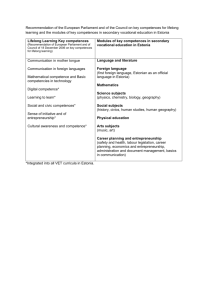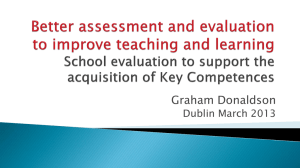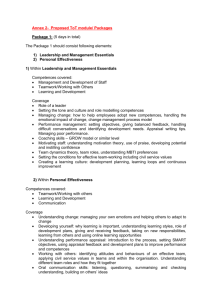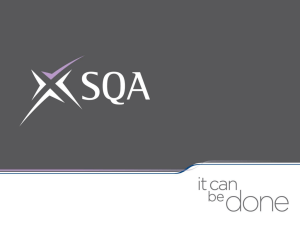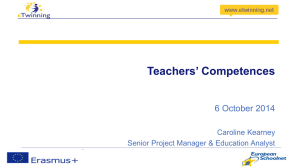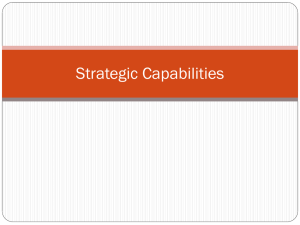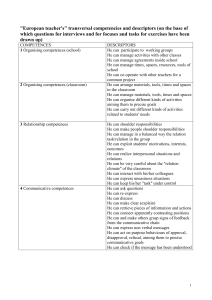Folie 1 - GrowthPhases
advertisement
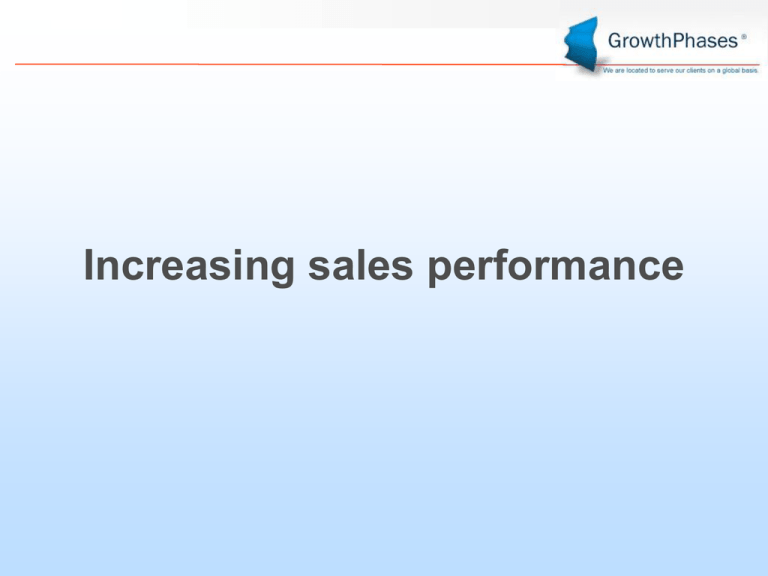
Increasing sales performance Basic Assumptions • From the customer’s perspective, sales activities have to be regarded as an essential element of the marketing mix Design sales activities according to marketing principles • From the company’s perspective, sales activities are a permanent and substantial investment Design sales activities according to principles of efficiency • To realize an optimum level of sales effectiveness the following issues have to be addressed: • Process • Content • Training • Systems Sales performance loop Systems Process - Organizational setup and sizing - Analysis of Customer needs and decision making processes - Planning, monitoring & controlling - Documentation of current sales processes (as-is) - Incentive scheme - IT-systems and tools - Analysis of sales targets and sales funnel - Perfect alignment of all elements, ensuring optimum result Training - Assessing training requirements - Planning procedure - Skills - Attitudes - Monitoring and Evaluation concept - Company AND team specific training and coaching program Design of - Sales processes (to-be) - X-selling paths - Interfaces (systems/tools) Sales Performance Content - Revisiting value proposition and positioning statement - Defining generic motivational drivers within the decision making process - Different needs in different customer segments - Powerful orchestration of sales calls - Maximum potential of customization 1. Process dimension Process Input Analysis Design Sales Targets Competition X-Selling „Paths“ Sales Process(es) (As Is) Basic Segment Needs (Product/Service) Sales Processes (To Be) Sales Funnel Customer Expectations (Sales) Interface to Systems/Tools (e.g. CRM) Sales process optimization • Identification of main steps in buyer’s decision process • Design of sales process to support buyer’s decision process • Delivering Value at every process step Select best choice Rationalize options Search for solutions Define needs Acknowledge pain Identify Position Define Propose Negotiate Process Landscape • A process landscape helps capturing the big picture • Different origins trigger different process sequences • Interfaces outside the sales department can easily be identified 2. Content dimension Content Input Design Sets of arguments for different combinations of Positioning and features of own Product/Service • Segment Sales Arguments • Predominant motive Basic Segment Needs (Product/Service) • • Generic driving motives in the decision process Formats for interaction and presentation • - Differentiating Activating and memorable In line with overall positioning Sales material Presentation media Additional elements Applying marketing know how in sales • Sales calls are done in a very standardized and formal way • Same pattern for all industries • Very traditional if not boring • Companies try to differentiate themselves from competition investing millions in advertising and corporate communications • The don’t try this concerning sales calls Creating an unique style of presentation and discussion helps getting memorized and building relationships The ability to address individual motivational drivers increases the hit rate Individual orchestration of sales calls (example) Visualizing the prospects’ demand and setup in a joint activity Selecting the presentation variant according to motive Identification of predominant motives 3. Training dimension Sales Training Needs Analysis Specifc Stake Holders • • • • Target Group Training Score Card Customers Planning Skills Training Tasks Clear Goals Methodology Plannable Input-Output Relation Predictable Outcomes Implementation Training Program Company • • • • structured, integrated process to assess the training needs defines and measures the progress of development along specific development goals follows a holistic approach taking into account different stake holder interests Attitudes Change Clear Directions Processes Time Uncertain Outcomes Training & Coaching Program TrainingScoreCard within the HR resource development system HR-department data - Employment and career history - Track record (e.g. appraisals, performance records) - AC results - Test results - Career Plans - Succession Systems Extracts from Corporate Strategy - Mission Statement - Corporate Values - Medium-long term strategy (e.g. expansion goals, optimization plans) - Balanced Score Card TSC Process Questionnaires for all relevant Stake Holders Skills? Competences? Attitudes? Short Term Needs? Medium-Long term needs? Job Specifics? Core Competences Model Business Behaviour / Skills Related & & Functional Competences People Management Competences TrainingScoreCard within the HR resource development system TSC Process Development and Training Goals Development areas Priorities Specific goals Indicators Monitoring system Individual Development Plans - Training activities - Other development activities (e.g. job rotations, shadowing) Program Planning Aggregation of individual needs Defining and selecting appropriate development activities Scheduling Aggregate Development Plans - Yearly training program - Mid-term training program - Development budget planning - Input for career and succession planning systems Training modules offer (examples) • First call - emphasizing company´s position and generating maximum opportunities • • Follow-up calls - opportunity management and winning new accounts • Solution selling for key and global accounts • Optimum structure of the single point of contact (SPOC) • Customer insight & lead generation with winning telemarketing strategies • Sales and sales support with relevant inside sales activities 4. System dimension Systems Input Analysis Design Corporate Strategy Competition Organizational setup and sizing Channel Structure Customer base Planning, monitoring and controlling IT architecture Incentive and remuneration scheme Sales Processes Systems/Tools (e.g. CRM)

